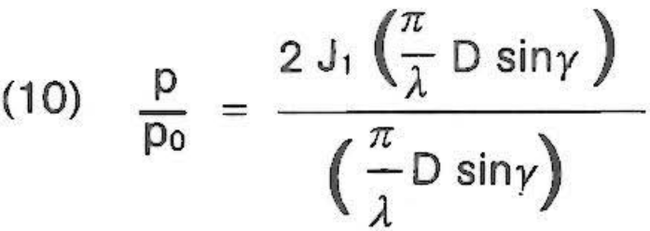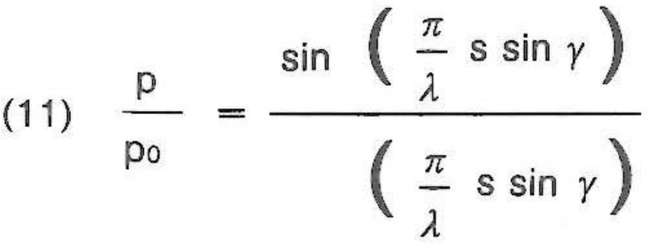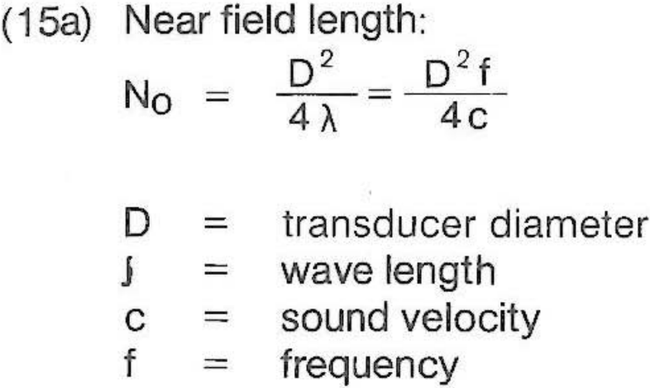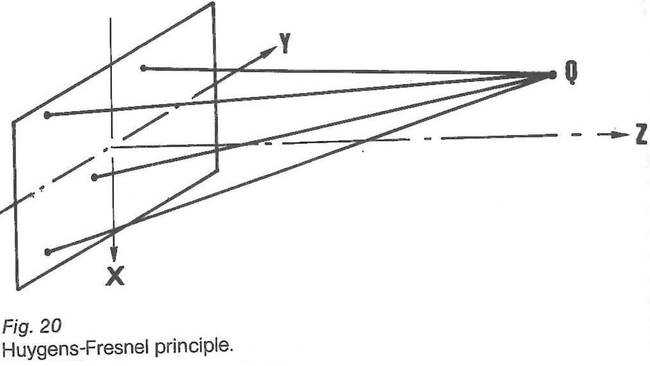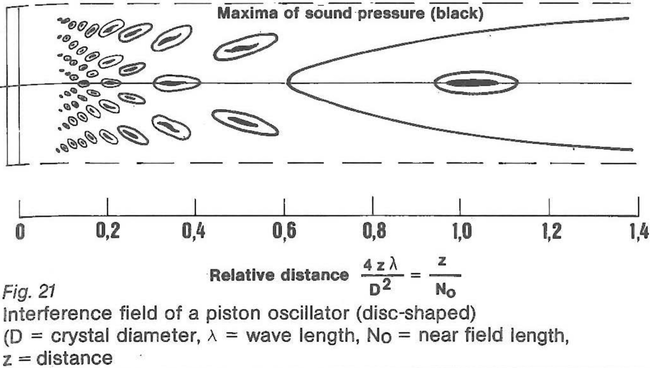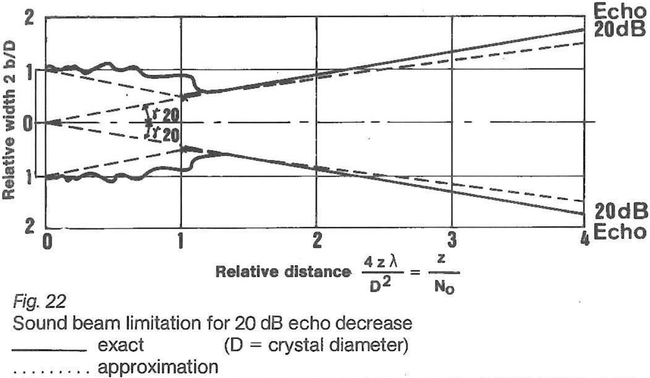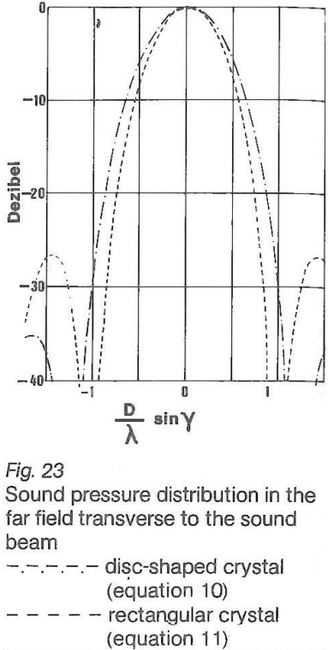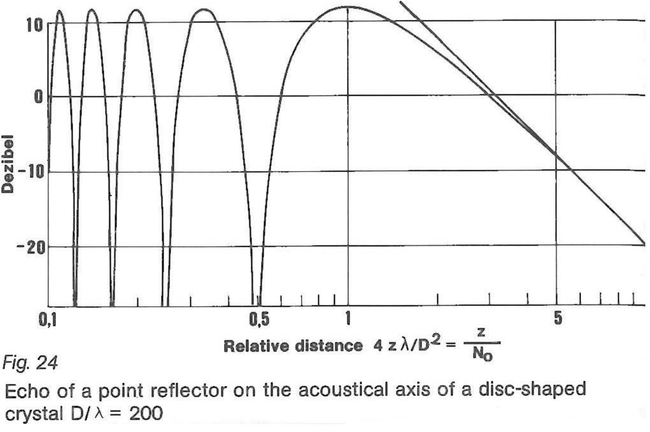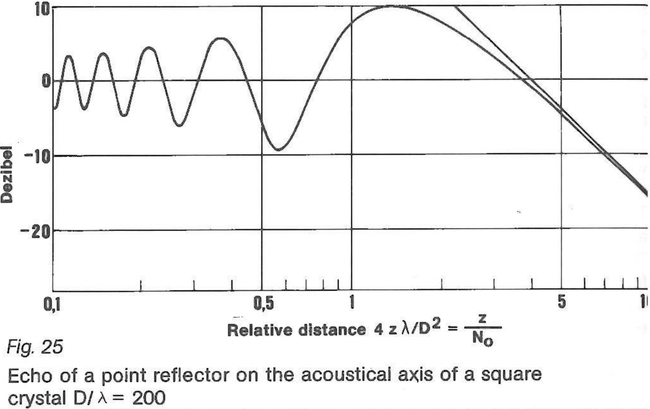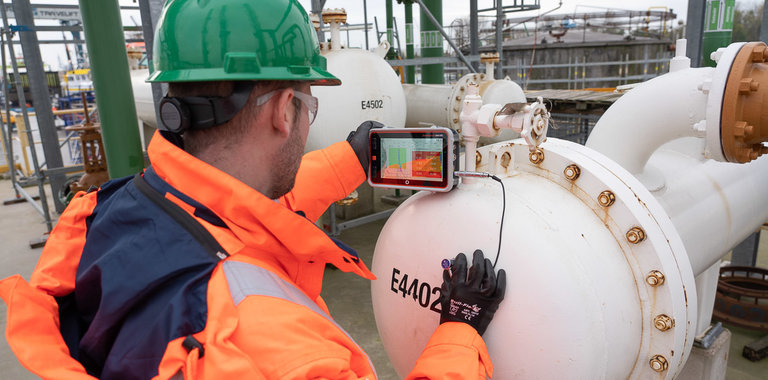
Sound Beam Characteristics in Ultrasonic Testing
In this article:
- Ultrasonic Sound Beams Exhibit Strong Directionality: Due to their high frequency and short wavelength, ultrasonic waves concentrate energy into a narrow beam, making them ideal for precise flaw detection in materials testing.
- Near Field and Far Field Define Beam Behavior: The sound field is divided into a near field with complex pressure variations and a far field where the beam spreads predictably—understanding both is essential for accurate probe placement.
- Interference Patterns Shape Beam Focus: The transducer surface acts as an array of radiating points, and the overlapping of spherical waves creates interference patterns that define the beam’s intensity and direction.
- Beam Width and Divergence Depend on Transducer Size and Frequency: The beam narrows with larger transducer diameters and higher frequencies, influencing resolution and penetration depth in ultrasonic inspections.
- Directional Factor Impacts Echo Amplitude: Echo strength decreases off the acoustic axis, and this directional sensitivity must be accounted for when interpreting signals from reflectors located outside the beam center.
Due to the high number of oscillations (MHz) in an ultrasonic wave and the correspondingly small wave length the sources of ultrasound have a strong directional characteristic. Sound pressure amplitudes p worth mentioning can only be confirmed in a small sector of space. The essential and, for the test, the most significant portion of the sound field lies within a narrow sector of the field and this sector is known as the sound beam.
To understand this directional effect the surface of the transducer is regarded es being an array of sound radiating points. Each sound wave radiated from such a point propagates spherically. They reach a point Q in space at different transit times (fig. 20). There the separate waves overlap, they interfere and, according to phase and amplitude, give the total sound pressure at point Q. Depending upon the position of Q the effects of the interference can be very different. Fig. 21 shows how the sound is bundled into a narrow sector, due to interference, with a crystal where D/λ = 10. In the zone immediately in front of the transducer there is an area with strong sound pressure variations i.e. the " near field". The pressure maximum which is furthest away from the transducer marks the end of the near field. At this point the sound beam is concentrated to the greatest extent. Each source of sound has such a near field the shape of which, however, is influenced by the shape of the transducer.
When testing materials lt is very important to know which portion of the sound beam is suitable for the test i. e. the working range of the probe. Frequently the question is posed: Where with a disc-shaped flat transducer, are the edges of the beam in which an echo from a point reflector does not decrease by more than a definite value below the maximum pressure on the axis. If a probe has a directional factor R = 1 on the acoustical axis then lt generates, in a point Q outside the axis, a pressure R < 1.
A sound wave reflected from there is picked up by the same probe with the same reduced value R < 1. The returning signal, independent from the reflector (point) is located with the directional factor R2 as compared to the acoustical axis. In the dB system.
A 20-dB amplitude drop from a point reflector echo means then a free field decrease by 20/2 dB = 10 dB. Fig. 22 shows this beam limitation in the far field accurately and in the near field as enveloping. There isn't any sound pressure worth mentioning outside this beam. Fig. 22 then is the model for the sound radiation of a Probe.
The near field shows a beam with the approximate diameter of the crystal — it is reduced however up to the end of the near field to half the crystal diameter.
The divergence angle γ is constant because the sound pressure amplitude p normal to the acoustical axis for the disc-shaped crystal follows the following equation
For rectangular crystals the following applies accordingly.
Whereby for s one uses either side a or b of the crystal. As per equations 10 and 11 and fig. 23 the following refraction angles γ6 and γ20 also belong to the important cases of drops in amplitude by 6 dB and 20 dB
For disc oscillators:
γ6 = arc sin 0.51 λ/D
γ20 = arc s in 0.87λ/D
For rectangular oscillators:
γ6= arc sin 0.44 λ/s
γ20 = arc sin 0.74 λ/s
(s = an optional side (a or b) of the oscillator.)
With distance z from the transducer the sound pressure p changes as well. The following applies for a disc-shaped transducer:
(D transducer diameter, z distance) For larger distances z equation (12) can be approximated by
In the dE3 system this becomes:
The following applies to all transducers regardless of their shape: For large distances the sound pressure amplitude decreases in proportion to the distance ( equation 13) or: the sound pressure curve plotted against the logarithm of the distance (equation 14) is a straight line. The area to which this relationship applies is known as the " far field". The range between the near field and the far field is known as the "transition range". The distance law for a square transducer, which can't be described as easily as in equation 12 is given in fig. 25.
Table 4 is an auxiliary table for estimating the width of the sound beam for free field and echo oparation with flat disc-shaped and rectangular transducers. The beam width ( measured from the axis) is then calculated as follows:
Table 5 is a survey of the near field lengths for different disc-shaped transducers an different media .
characteristics of sound waves when striking discontinuities


